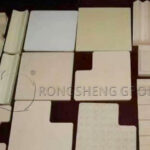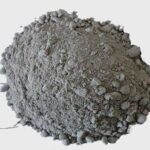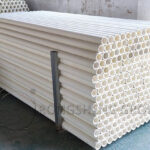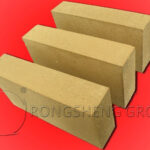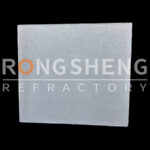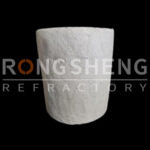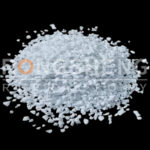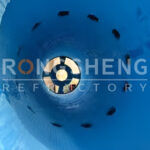Iron Liquid Pre-Treatment Refractory Material Description
With the development of metallurgy industry, steel species and quality is continuously enhancing. So there are stricter requirement on steel liquid quality, i.e., steel liquid has lower sulfur, silicon and phosphorous content to reduce the load of converter and adapt to converter steel making tempo. Steel liquid in ladles(torpedo car), tapping channel and iron mixing car should be pre-treated. Torpedo tank should not only endure steel liquid corrosion, but also suffer severe corrosion of metallurgical agents, for example, desulfurizer (CaO-CaF2-CaC2), desiliconization agent(Lime ) and dephosphorization agent (FeO-CaO-CaF2 or Na2CO3). These agents have severe molten corrosion and oxidation to high alumina refractory materials. During pre-treating process, the alkalinity of slag has no significant change, furnace lining is scoured by steel liquid during stirring, batch type working can lead to temperature fluctuation, all these factors cause the quick damage of refractory furnace lining. Thus, torpedo tank should have excellent acid corrosion resistance, basic slag corrosion resistance, thermal shock resistance and spalling resistance.
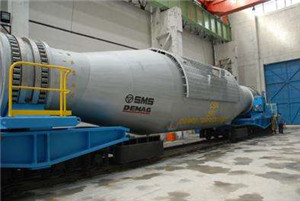
Sintered clay bricks or andalusite bricks are used for the masonry of torpedo tank which doesn’t need to desulfurization, ordinary part of inner lining is masoned by clay bricks or ordinary high alumina bricks. Tank hole and slag line where is vulnerable to damage are masoned by high alumina bricks. To ensure the lining get an even damage, synthesized masonry method is adopted, unburned andalusite carbon bricks are used in severe corrosion parts, alumina silicon carbide carbon bricks are used in slag line, alumina silica bricks are used at top part, where oxidation damage is usually occurred, high quality alumina silicon carbide carbon bricks are usually used in impaction zone.
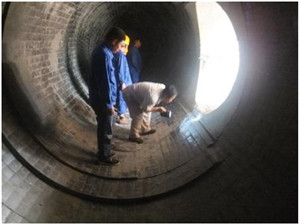
Iron Liquid Pre-Treatment Refractory Material Index
| Item | Alumina silicon carbide carbon bricks | Sintered Al-SiC-C bricks | ASC casting gunning mix | Alumina silicon carbide castable |
| Application parts | Impaction zone | Tank top and ladle hole | Inner lining | Tank hole |
| Al2O3 % > | 70 | 50 | 60 | 50 |
| Fe2O3 % < | 1.5 | 1.5 | 1.5 | 1.5 |
| SiC % > | 6 | 15 | 7 | 15 |
| C % | 12 | 5 | 2 | / |
| Apparent porosity % < | 4 | 8 | 16 | 16 |
| Bulk density g/cm3 | 3.0 | 2.8 | 2.6 | 2.4 |
| Compression strength Mpa > | 30 | 40 | 30 (1450℃,3h) | 30 (1450℃,3h) |
| Thermal shock resistance/times | >30 |
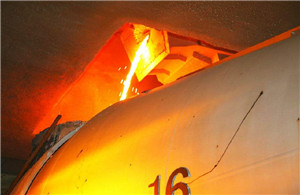
For torpedo tanks need to desiliconization, desulfurization and dephosphorization, clay bricks and high alumina bricks are not suitable for the drastic working condition, so alumina silicon carbide carbon bricks are mainly used. But for high alkalinity and high oxidability processing agents, alumina silicon carbide carbon bricks are not suitable, alumina magnesia carbon bricks and alumina magnesia bricks are better replacement. For desulfurization torpedo tanks, magnesia carbon bricks or magnesia calcia carbon bricks are applicable, for desiliconization and dephosphorization torpedo tanks, magnesia carbon bricks is the best choice.
Spray gun is a very important component of steel liquid pre-treatment system, it always suffers intense temperature fluctuation. Spray gun should swiftly entered into steel liquid above 1300℃, and instantly exposed to normal temperature environment when stopped using. So there is very high thermal shock resistance demand on spray gun, thermal shock crack is the key damage factor to spray gun, which will induce the permeation of steel liquid to spray gun. So stainless steel fiber reinforced corundum mullite castable is usually used to cast spray gun, nowadays, carbon containing castable is gradually used, which significantly increased corrosion resistance of spray gun.
